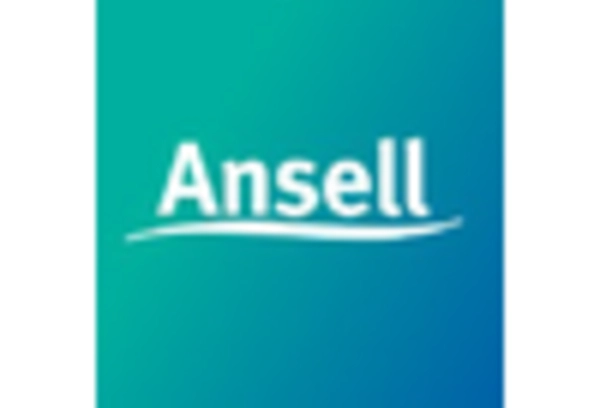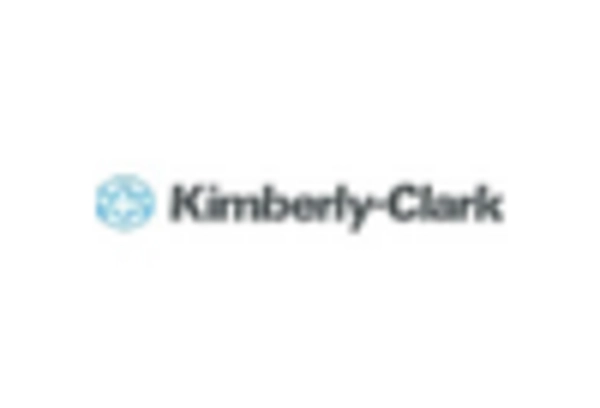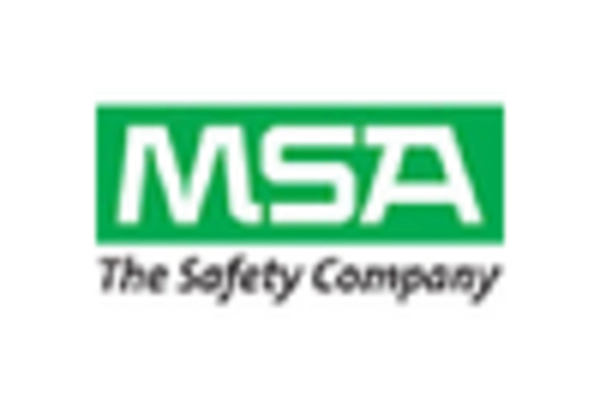Increasing Workplace Safety Regulations
The Body Protection Equipment Market is experiencing a surge in demand due to the increasing emphasis on workplace safety regulations. Governments and regulatory bodies are implementing stringent safety standards across various sectors, including construction, manufacturing, and healthcare. This regulatory landscape compels organizations to invest in high-quality body protection equipment to ensure compliance and safeguard their workforce. For instance, the Occupational Safety and Health Administration (OSHA) has established guidelines that necessitate the use of personal protective equipment (PPE) in hazardous environments. As a result, the market for body protection equipment is projected to grow significantly, with estimates suggesting a compound annual growth rate (CAGR) of around 6% over the next few years. This trend indicates a robust market driven by the need for compliance and enhanced safety measures.
Rising Awareness of Occupational Hazards
The Body Protection Equipment Market is witnessing growth fueled by the rising awareness of occupational hazards among workers and employers alike. As industries evolve, the understanding of potential risks associated with various job roles has become more pronounced. This heightened awareness leads to increased demand for protective gear, as organizations strive to mitigate risks and protect their employees. Reports indicate that sectors such as construction and manufacturing are particularly proactive in adopting body protection equipment, with investments in safety gear rising by approximately 15% annually. This trend reflects a cultural shift towards prioritizing employee safety, thereby driving the market for body protection equipment. The ongoing education and training initiatives further reinforce this awareness, suggesting a sustained demand for protective solutions in the foreseeable future.
Technological Innovations in Protective Gear
The Body Protection Equipment Market is significantly influenced by technological innovations that enhance the performance and functionality of protective gear. Advancements in materials science have led to the development of lightweight, durable, and breathable fabrics that offer superior protection without compromising comfort. For example, the introduction of smart textiles equipped with sensors can monitor environmental conditions and provide real-time feedback to users. This innovation not only improves safety but also increases the efficiency of protective equipment. Market analysts project that the integration of technology in body protection equipment could lead to a market expansion of approximately 8% over the next five years. As industries increasingly adopt these advanced solutions, the demand for technologically enhanced protective gear is likely to rise, further propelling the growth of the body protection equipment market.
Emphasis on Employee Well-being and Productivity
The Body Protection Equipment Market is increasingly influenced by the emphasis on employee well-being and productivity. Organizations are recognizing that investing in high-quality protective gear not only ensures safety but also enhances overall employee morale and productivity. Studies have shown that workplaces that prioritize safety tend to experience lower accident rates and higher employee satisfaction. This correlation is driving companies to allocate more resources towards body protection equipment, with some organizations reporting a 20% increase in safety-related expenditures. Furthermore, as businesses strive to create a positive work environment, the demand for ergonomic and comfortable protective gear is on the rise. This trend indicates a shift towards a more holistic approach to workplace safety, suggesting that the body protection equipment market will continue to thrive as organizations prioritize the well-being of their workforce.
Growth of the Construction and Manufacturing Sectors
The Body Protection Equipment Market is poised for growth, largely driven by the expansion of the construction and manufacturing sectors. These industries are characterized by high-risk environments where the potential for accidents and injuries is prevalent. As construction projects increase in scale and complexity, the need for robust body protection equipment becomes paramount. Recent data indicates that the construction sector alone is expected to grow by 5% annually, leading to a corresponding rise in demand for protective gear. Additionally, the manufacturing sector's focus on enhancing safety protocols further contributes to this trend. Companies are increasingly investing in body protection equipment to ensure compliance with safety regulations and to foster a culture of safety among employees. This growth trajectory suggests a promising outlook for the body protection equipment market in the coming years.


















Leave a Comment